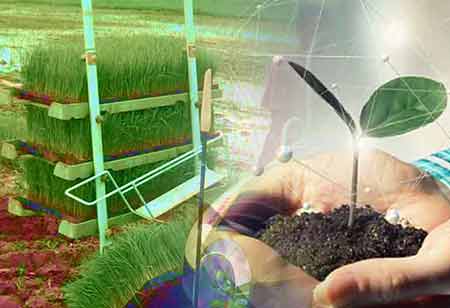Thank you for Subscribing to Agri Business Review Weekly Brief
The Impact Of Drones On Agriculture
Drones enhance overall results, enable farmers to overcome various other obstacles and

By
Agri Business Review | Wednesday, August 03, 2022
Stay ahead of the industry with exclusive feature stories on the top companies, expert insights and the latest news delivered straight to your inbox. Subscribe today.
Agricultural drone technology can transmute traditional farming methods in multiple ways by providing precise data to refine the quality of farming.
FREMONT, CA: Drone technology has obtained the most attention in the industry due to its versatility and is seen as the future agricultural community. The military first used them. However, when other sectors discovered the wide range of unmanned aerial vehicles (UAVs) applications, they quickly embraced them.
Drones enhance overall results, enable farmers to overcome various other obstacles and reap numerous benefits from precision agriculture. Implementing drone technology aims to eradicate any uncertainty or guesswork and instead concentrate on accurate and reliable data.
Weather, soil conditions, also temperature are all critical factors in agriculture. Agriculture drones empower farmers to adapt to unique conditions and make informed decisions. Crop protection, crop treatment, crop scouting, irrigation, field soil analysis, and crop damage assessments can be controlled with the support of the information that has been gathered.
Only after thorough learning of drone characteristics can one obtain an in-depth knowledge of agriculture drones. Drones generally include a navigation system, multiple sensors, GPS, high-resolution cameras, programmable controllers, and autonomous drone tools.
BEST DRONE PRACTICES
Drone technology easily restores conventional agricultural activities, which are then carried out as follows:
Irrigation Monitoring:
Drones with hyperspectral, thermal, or multispectral sensors detect dry areas or require a farmer's attention. Drone survey helps to enhance water quality and expose possible pooling or leaks in irrigation by monitoring provides measurements of the vegetation index to help realize the health of crops and released heat or energy,
Crop Damage Assessment
Agricultural drones with multispectral and RGB sensors can also track weeds, infections, and pests in field areas. The exact quantities of chemicals necessary to combat these infestations are known as a result of this data, which reduces the farmer's expenses.
Field Soil Analysis
Farmers may employ the drone survey to learn more about the soil conditions on their land. Multispectral sensors capture data that can be utilized for seed planting patterns, field soil analysis, irrigation, and nitrogen level control. In addition, farmers can thoroughly analyze their soil conditions using precise photogrammetry/ 3D mapping.
Livestock tracking
Farmers may use the drone survey to record their crops and cattle's motion. Thermal sensor technology helps in the recovery of missing animals and the recognition of injury or illness. Drones can conduct this function well, contributing immensely to vegetation development.





